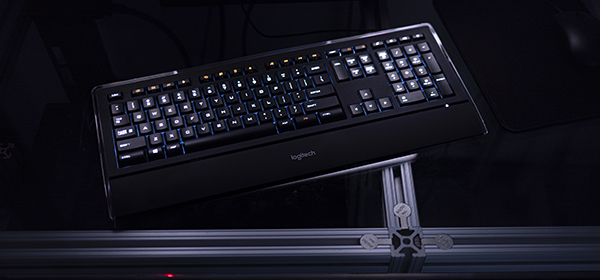By Ignacio Lobos| UW-IT Strategic Communications
I came into the office the other day and there was no wired telephone handset on my desk.
And just like that, I had become an actor in a quiet technological revolution going on at the University of Washington and other work and study places across the globe: We are just not connecting our devices to ethernet ports as much as we used to.
Some of us have moved our UW phones to our computers, taking calls via Zoom or Teams. Others have ditched desktops for laptops and docking stations that use Wi-Fi.
At the UW, you can still find an ethernet connection at pretty much every workstation — practically all walls on all floors in all UW buildings have the ubiquitous four-port plate that connects us to the UW network and the world.

Except that now, more and more people prefer to connect via Wi-Fi. And as Wi-Fi has continued to improve — with faster connections and better security features such as encrypted communications, for example — we are moving from a wired environment to one that is mostly untethered.
Does that mean Ethernet ports are going away? Not at all, said Dave O’Meara, service owner of the wired network service in UW-IT’s Infrastructure Division.
“At UW-IT, we completely understand that there’s a steady migration to wireless, but many people in our UW community will continue to require ethernet ports for all kinds of reasons. Ethernet connections are not going away,” he said.
What’s happening is the strategic deployment and maintenance of ethernet ports across UW — replacing or modernizing those that are in use and deactivating those that are not.
Now, this is not a simple step. UW-IT, particularly its infrastructure division, pays close attention to how technologies are deployed at the UW, and it sees the migration to more wireless devices as an opportunity to save everyone some money. In this case, to the tune of about $2 million in the next two to five years.
“As we started to modernize our ethernet ports, our engineers discovered that as much as 40 percent of available ports had not been used at all in the last 12 months,” said Bin Guo, vice president of the infrastructure division.

“It costs money to touch each and every one of those ports, so it makes no sense to refresh a port that’s not being used,” she said.
For Guo, paying attention to something as small as a four-prong port signals how nothing is too small for UW-IT’s commitment to serve the UW community.
“Saving about $2 million is highly significant. But just as important is how we keep pace with technological changes,” she said. “We adapt and innovate to better support the University.”
In the meantime, the wired service team has a plan to contact all building managers in advance before any changes are made to Ethernet ports.
Building managers will have a great deal of discretion to decide which ports will remain active even if they have not been used at all in the past year.
“Our goal is to work closely with building managers to ensure their connectivity needs are being met,” O’Meara said. “If you need an ethernet connection, you got it.”
Contact UW-IT for help:
Do you want to migrate your UW Phone to Teams? Go to Teams Phone service page now.
If you have any questions about the Ethernet project or you’re a building manager who needs to get working on your connections right away, send a query to help@uw.edu with “ethernet ports” in the subject line.
